ipad vs ipad pro for drawing
iPad vs iPad Pro: Which one should you buy?
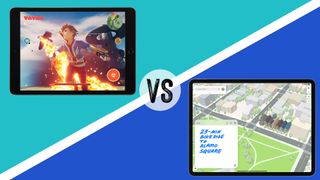
If you're looking at the iPad vs iPad Pro for creative use, then you're really asking about budget vs high-spec – the price difference is large, but ultimately they're both tablets that run the same operating system, just everything else in our iPad model list.
The iPad 10.2-inch has just got an upgrade, but we're going to look at last year's version (2020) compared to the M1 iPad Pros (2021). They do all the same core stuff, and are both designed just as big screens in thin and light bodies… but there are significant differences.
In fact, though they look so similar, they barely share a single component in common, so does the 'Pro' name mean you really need the more expensive option if you're buying one for your work?
It really depends on your work. The iPad Pros are creative powerhouses, released this year using Apple's desktop-class processor, and really staking a claim to be your primary creation tool, depending on the task.
The 10.2-inch iPad mostly finds its home as a general tablet for around the house – ideal for browsing the web, watching video, playing games and more. But it has a huge amount of creative potential itself, or could be a great tool in your bag for showing off creative work.
In this guide, we'll break down all the details of their differences, so you can decide whether the iPad Pro seems to be worth the extra expense in your case – and don't forget that you might be able to get some money off it with our guide to the best iPad deals.
We have just seen a replacement for the cheaper iPad later in 2021, but it's not wildly different if we're honest, there's a faster processor, an improved camera and True Tone, but many of the other specs remain the same.
Don't forget to check out the best iPad stands, for a great way to keep you iPad's screen perfectly visible for work or play.
iPad vs iPad Pro: design
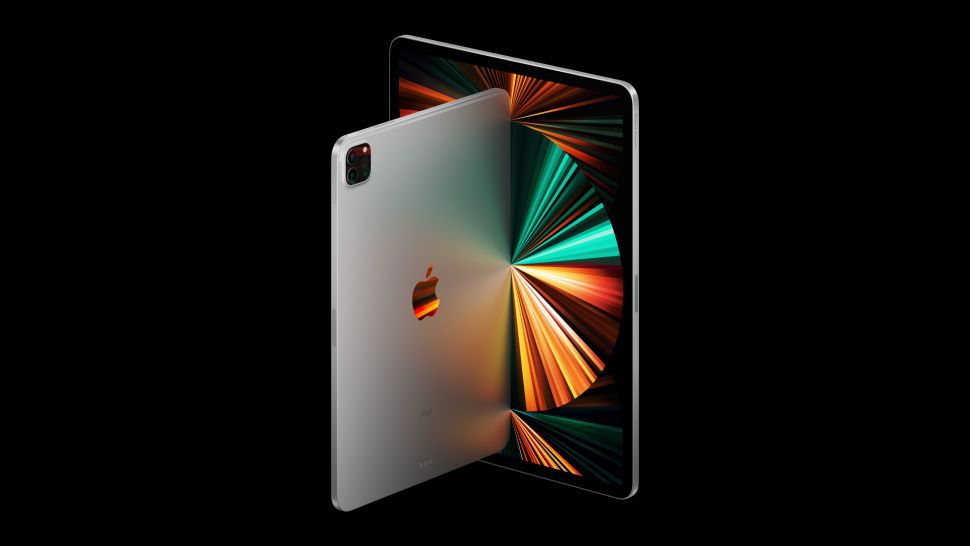
The cheaper iPad's design calls back right to the very first iPad, with some sizeable bezels and a round Home button at one end. This design doesn't look very cutting edge, but it has its advantages – it's easy to hold and pass around something with a proper bezel without anyone smudging up the display, and if you'll share the tablet with your family, the button-based system for going home is easily understood and controlled by kids.
Of course, it's still made with a premium feel, because it's Apple. The front is all a single piece of glass except for the button, then it has an aluminium back and sides. At 7.5mm thick, it feels perfectly svelte.
There's a forward-facing camera in the top bezel, and a rear camera that's flush with the case. At the bottom (if held in portrait) are the speakers and a Lightning port for charging and connectivity. At the top is a Sleep/Wake button and a 3.5mm jack. On the right are two volume buttons. It comes in three colours: Silver, Space Grey and Gold.
The iPad Pro has a sleeker-looking design, which first debuted in 2018. It has equal and slim bezels around the screen, and the display itself has rounded corners that match the case. There's no Home button.
Whereas as the sides and back of the cheaper iPad curve into one another, the iPad Pro is all flat surfaces and right angles. This has a practical purpose in that it gives the Apple Pencil 2 a surface to magnetically connect to. It also looks pretty stark and cool.
Again, it's all glass at the front, while the back and sides are aluminium. The camera module sticks out of the back a little, to provide the lenses with more space to work. On the front is a forward camera as well as a Face ID 3D scanning system, both hidden within the bezel.
The iPad Pro comes in two different sizes: 11-inch and 12.9-inch (both referring to the size of the screen, of course). The 11-inch model is just 5.9mm thick, making it feel ultra slim and portable. The larger version is 6.4mm thick.
Both versions have a proper stereo speaker system, with grilles in all four corners. On one end is a USB-C port for connectivity and charging; on the other is the Sleep/Wake button, with volume controls on the side. There's no 3.5mm jack here. The iPad Pros come in Silver or Space Grey only.
Really, the design differences between the two models don't make much difference to whether they're worth purchasing on their own. It's certainly nice to have a more futuristic-feeling design if you're paying for the more expensive models, but really its the feature encased within the iPad Pro design – including that upgraded Apple Pencil support – that might persuade you to upgrade.
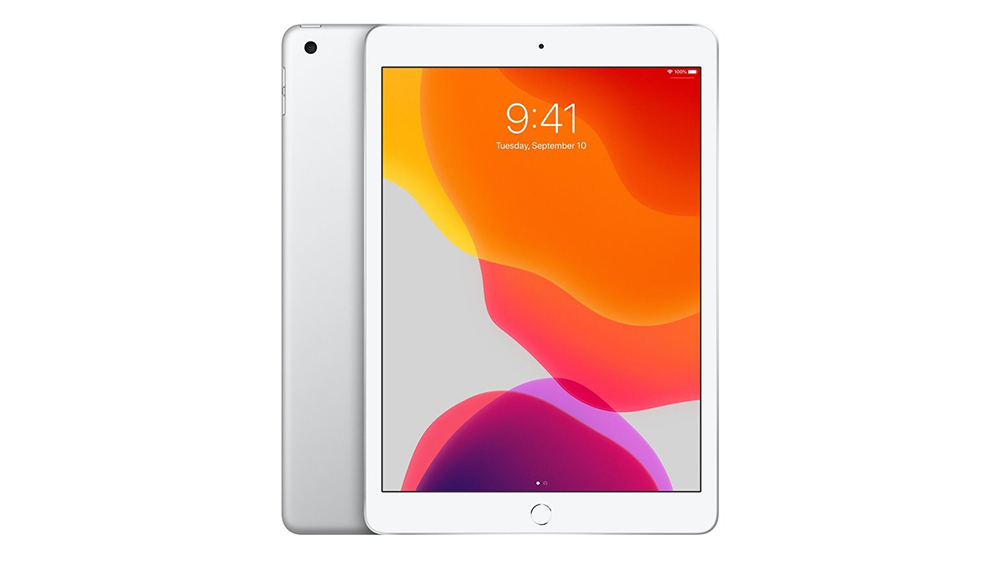
iPad vs iPad Pro: Display
Both sets of iPad have high-res LCD displays in sizes that aren't a million miles from each other… but that's where the similarities rapidly draw to a close.
The basic iPad has a 10.2-inch screen with a resolution of 2,160 x 1,620, which is a perfectly sharp 264 pixels per inch. For viewing photos, reading text and pretty much any use it's designed for, there's more than enough detail for most people.
Its brightness is 500 nits, which again is pretty good. You shouldn't have a problem seeing it in most lighting conditions, and this is as bright – if not brighter – than almost all laptop or monitors screens.
It's an IPS screen, so its viewing angles are pretty great. Colour reproduction is strong, and contrast is decent. It's a good screen for the price. It also supports the Apple Pencil v1, which is a great bonus.
The iPad Pro 11-inch takes it up a level, though. The resolution is 2388x1668, which is also 264ppi, but with a brightness of 600 nits, you get a really noticeably extra burst of vibrancy, and it cuts through reflections better – helped by better lamination (meaning it appears to be closer to the surface of the glass) and an extra anti-reflective coating. It adds up to a big visibility boost.
Then you've also got support for the P3 colour gamut in the iPad Pro, which the cheaper model lacks, which is a real boost for photography and video work. Apple's True Tone tech is included here, which shifts the colour balance to match the ambient lighting of the room you're in, making it much more comfortable to read on in warm interior lighting, too.
A key thing for digital artists is that it's a 120Hz screen, whereas the cheap iPad is 60Hz only. This means that when you're drawing with the Apple Pencil, you see the results twice as quickly (the screen updates 120 times per second instead of 60 times per second), which means your lines appear more fluidly, and make it easier to be accurate. It's a major upgrade for serious artists. In this case, only the Apple Pencil 2 is supported, due to the way it charges and pairs with the iPad being different than the original.
The iPad Pro 12.9 moves thing into yet another gear, though, with some major upgrades even over its 11-inch sibling. Obviously the screen is larger, providing more space for having apps side by side, or simply for working on images – and the 2732x2048 resolution is 264ppi once again.
But this model uses a mini-LED display instead of the regular LED backlights in the other two models. This means there are thousands of tinier LEDs behind the screen, which can actually make it much brighter – in normal use, it's still 600 nits, but for HDR video or images, it can reach 1,000 nits fullscreen, and 1,600 nits for peak highlights in small areas.
This is way beyond what the vast majority of TVs can achieve – even high-end ones, including any OLED TV on-sale today – and makes it an incredible tool for video. And it's not just about brightness – there are 2,596 individual dimming zones for the backlight, so you can impressive precision in darker areas of the screen.
This setup has a benefit outside of video too – the brightness may be capped at 600 nits, but that extra backlight precision makes things like white icons stand out more clearly on dark backgrounds, and makes the contrast of your photos or other images more lifelike.
Basically, when it comes to screens: the cheap iPad is absolutely fine, the iPad Pro 11-inch is a major step up, and the iPad Pro 12.9-inch is in its own league, particularly for video.
iPad vs iPad Pro: Battery life

This is an easier decision than most of the sections: you get roughly 10 hours of battery life in light use from all of these models, which has been Apple's target for iPads since their inception, really.
That depends on usage – playing games or really complex pro tasks will tax the machines' longevity more, and you could easily half that number with especially demanding stuff.
You might see this more keenly on the iPad Pros, with their ultra-powerful chips, if you're buying them to perform complex tasks. But still – in light browsing, you should get 10 hours easily, if not a little more.
Both models hold their batteries between charges equally well – it takes days and days without use for an iPad to trickle down on standby.
iPad vs iPad Pro: Features
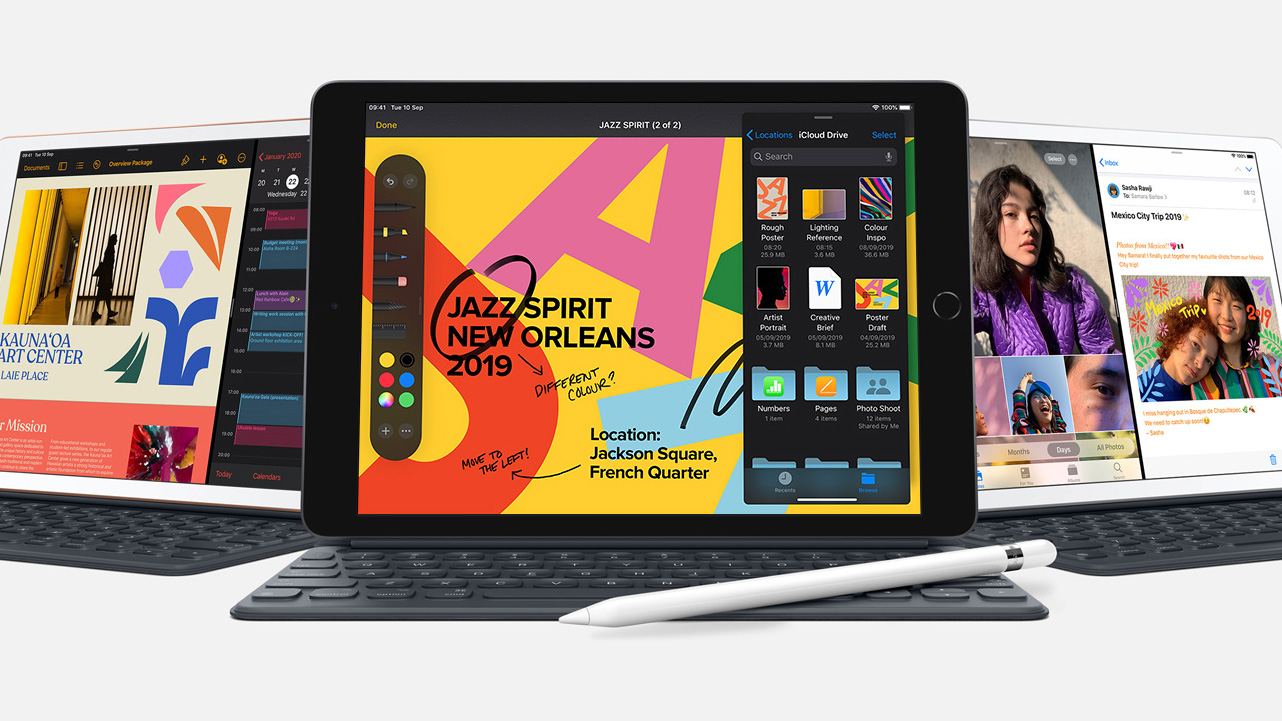
The iPad Pro models use a USB-C port for their connectivity, which actually doubles as a Thunderbolt 3 port. This means it offers flexibility for connecting devices, including things like external screens, microphones, storage and more. For certain pro uses, this can be a major, major benefit.
The cheaper iPad's Lightning port can connect to some accessories via adapter, but it's much more limited and uncertain, due to things like software inconsistencies and power outputs.
The cheap iPad does have one potential connection benefit over the iPad Pro, though, and that's its built-in 3.5mm connection. For music-making, this is a fairly big deal, since it means none of the latency of Bluetooth headphones.
The iPad Pro works great with external DACs over its USB-C connection (we recommend the EarMen Sparrow), but musicians may with it just had the 3.5mm jack, like the cheaper model.
Speaking of connectivity, both models include Wi-Fi and Bluetooth, but the iPad Pros feature Wi-Fi 6 (aka 802.11ax) while the iPad includes 802.11ac Wi-Fi. The iPad Pros also include Bluetooth 5.0, while the cheaper model is Bluetooth 4.2.
All the models here have the option of including cellular connectivity too, but with the cheaper iPad that's 4G only, while the iPad Pros provide a 5G upgrade.
We mentioned that the cheaper iPad supports the first-gen Apple Pencil, and this is paired with the iPad and charges using the iPad's Lightning port (or a Lightning adapter that comes with the Pencil). This solution is best described as 'inelegant but functional'. The Apple Pencil itself works great, it's just weirdly awkward to charge.
The iPad Pros work with the Apple Pencil 2, which charges wirelessly from the iPad Pro's battery, by connecting magnetically to the side of the iPad. This is a vastly superior system, though the performance of the Pencil itself is pretty much identical.
All these models include Apple's 'Smart Connector' too, which is a very basic connection for keyboard cases to use.
The four speakers built into the iPad Pros are a massive, massive improvement over what's in the cheap iPad. On the basic model, the speakers are built into one end, so don't offer stereo when in landscape. Their detail and audio reproduction is no issue for the price, but they don't impress.
The iPad Pros provide proper stereo with impressive separation and spatial effects, and they switch their configuration depending on which round you hold the iPad, so you get that stereo no matter how you hold it. It's also much louder and much fuller.
Similarly, the iPad Pro has a whole array of microphones with beam-forming tech, designed for video calls so that you sounds pristine and noise around you is reduced. The regular iPad's just has a couple of microphones with basic noise reduction.
iPad vs iPad Pro: Cameras
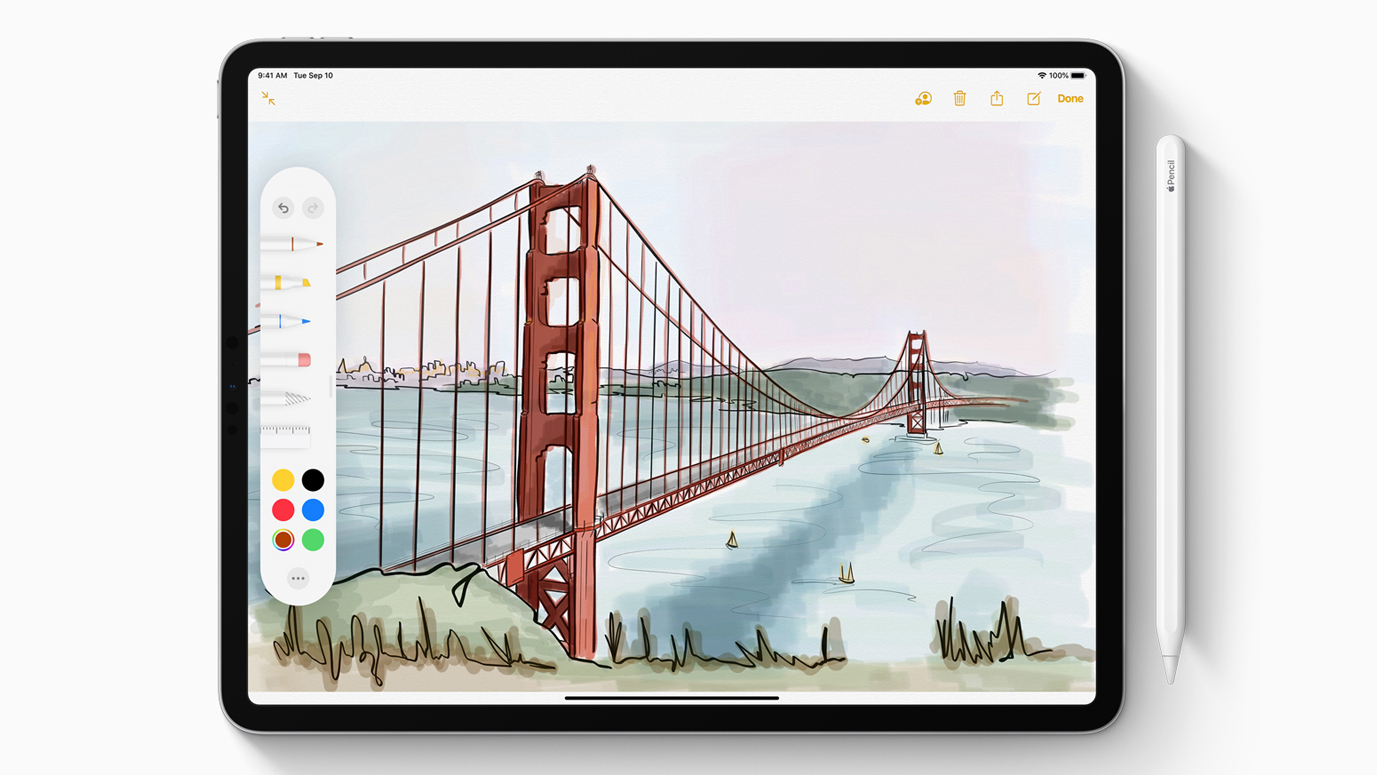
The cheaper iPad has a single wide-angle f/2.4 lens on the back, with an 8MP sensor. By today's standards, it's very basic – any mid-range smartphone can beat it, really. It doesn't offer 4K video (just Full HD 1080p).
The front camera is even more basic, with a 1.2MP sensor and just 720p video recording or streaming.
The iPad Pro is very different. There, you get a dual-camera system on the back, with a 12MP f/1.8 wide-angle cam, plus a 10MP f/2.4 ultra-wide (125°) cam. They also include a LiDAR module as part of the camera system, enabling them to scan in 3D while using the camera.
This can be used for quicker autofocus in dark scenes, but can also be used for augmented reality applications, enabling images/video to be combined with detailed 3D data, which can then be analysed or have information added to it live by developers.
The camera tech in the iPad Pro is also more advanced – better sensors, better lenses, better image processing – so the overall image quality is vastly superior to the cheap model. That includes 4K 60fps recording (though not in HDR, sadly).
The front camera on the iPad Pro is a 12MP f/2.4 ultra-wide affair, with a 122° field of view. You're not supposed to use all of it, though – the reason for this is for Apple's new 'Centre Stage' feature. When you're on a video call, it detects your face and crops into the image to just show you. If you move around, it auto pans to follow you within its ultra-wide view. If more than one person is there, it widens the field of view to accommodate that. It's very clever. This does mean you only get 1080p recording instead of 4K, though.
The front camera also benefits from the Face ID 3D scanning system, using it to create 'Portrait mode' images.
iPad vs iPad Pro: Performance
The regular cheap iPad is a perfectly capable portable computer. It uses the Apple A12 chip for its processor and graphics, which first appeared in 2018, and is a six-core CPU with 3GB of RAM.
It'll run any app well enough for basic stuff, including photo editing and 4K video editing, and performs well when you have apps side-by-side in Split View.
But the iPad Pro's M1 chip is totally in another league. It's an eight-core CPU with 8GB or 16GB of RAM (depending on this storage size you choose), and GPU as powerful as lighter dedicated graphics chips.
The A12 chip scores around 1,100 in Geekbench 5 for single-core performance, while the M1 scores around 1,700, so there's a good 50% improvement there.
But when it comes to multi-core performance for really taxing tasks, the difference is even larger. The A12 scores about 2,400 in the multi-core Geekbench 5 benchmark, but the M1 scores 7,200. That's a 200% improvement! A tripling of power.
And that isn't even the biggest performance gap. When it comes to GPU power, the A12 scores around 5,300 in Geekbench 5's Metal benchmark, while the M1 scores around 21,000. So that's quadruple the power for GPU computation, which includes rendering of images and effects – a huge boost for advanced creative work in Photoshop and its equivalents, or when video editing in the likes of Lumafusion.
Couple with the large amounts of RAM, this truly is like a pro laptop in a tablet form factor when it comes to sheer power. There's no question – the iPad Pro is truly pro, while the cheaper iPad is designed to be fast and capable for lighter tasks.
The cheaper iPad can tackles creative tasks, you'll just hit a ceiling with them. The size of the canvas, the number of layers, the number of tracks and so on.
However, it should also be noted that the taking advantage of the iPad Pro's power isn't that easy currently. Many apps, including Apple's, are limited in aspects such as the number of tracks you can have in GarageBand. They're designed for the lighter chips – the extra power of the M1 doesn't magically solve that.
However, the fact that the M1 is available will push that forward, and you'll be futureproofed if you have one.
iPad vs iPad Pro: Price
The cheaper iPad starts from £329/$329 for the 32GB model (which, frankly, you should only get if you'll do everything on it from the cloud), or you can get the 128GB version for £429/$429. Even that could be limiting for creative work, of course, but that's all this model goes up to.
If you want to add 4G support, you're looking at £459/$459 for 32GB and £559/$559 for 128GB.
The 11-inch iPad Pro starts from £769/$799 for 128GB of storage with 8GB of RAM, or its £869/$899 for 256GB/8GB, then £1069/$1099 for 512GB/16GB, and £1269/$1299 for 1TB/16GB.
The 12.9-inch model costs £969/$999 for 128GB/8GB, £1069/$1099 for 256GB/8GB, £1269/$1299 for 512GB/16GB, and £1469/$1499 for 1TB/16GB.
To add 5G connectivity to any of those models, simply add £150/$150 on top.
iPad vs iPad Pro: Conclusion
The cheaper iPad model has its place in a creative's toolbox – as the more budget way to show off your work on the go, its screen does a great job. As a lower-price drawing or note-taking tool, it works well. As just a video companion on your travels, it's great.
But the iPad Pro definitely earns its (admittedly large) price increase. It has the power of a MacBook Pro in a pencil-thin frame. Its drawing experience is a major step up. Its screen is hugely improved, and in the case of the 12.9-inch model, is the best on any tablet, and arguably any laptop, in fact.
If you want a mobile creative powerhouse that's totally future-proofed for whatever you might need to do next, as well as what you do today, the iPad Pro is obviously the better choice.
But as a media and light computer on a budget, the 10.2-inch iPad is one of the best of its kind too.
Read more:
- 7 reasons we're excited about the new iPad mini
- 22 inspiring drawing apps for iPad
- The best iPad keyboards
Matt has been testing technology for over a decade, working in specialist Apple publications as well general technology and creative journalism. By day, you can find him covering TV, audio, smart home gear and more at T3.com, as Home Tech Editor. By night, he's probably updating or pairing or installing some new piece of technology in the quest for the perfect setup.
Related articles
ipad vs ipad pro for drawing
Source: https://www.creativebloq.com/features/ipad-vs-ipad-pro
Posted by: holcombwhopribed.blogspot.com

0 Response to "ipad vs ipad pro for drawing"
Post a Comment